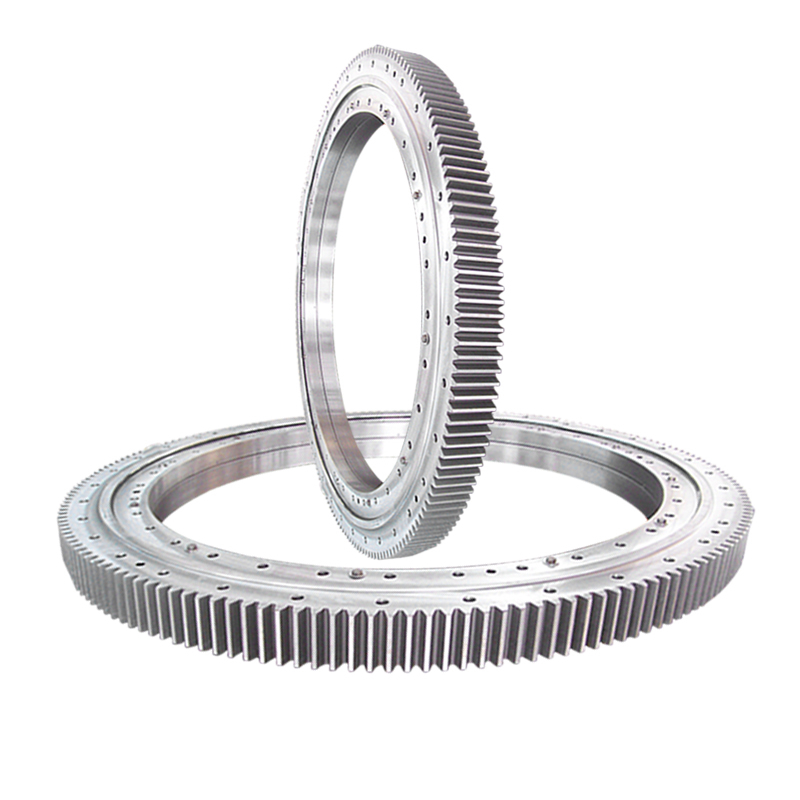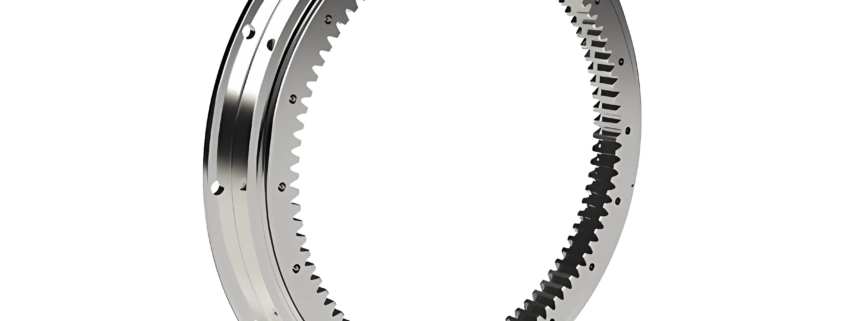Core technology and application fields of slewing bearings
The core technology of slew bearings includes the following aspects:
- Design and manufacturing of rollers: In order to ensure the load capacity and working accuracy of the slew bearing, the rollers must use appropriate materials and manufacturing processes. The structure and processing difficulties of the ultra-large split three-row cylindrical roller slew bearing show that the rollers need to be disassembled and spliced multiple times, and the processing technology is complex and the accuracy is difficult to guarantee.
- Design and manufacturing of cage: Slewing bearings usually use nylon cages. The cage has the advantages of light weight, low noise, and extended bearing service life, but it also has some disadvantages, such as being unable to withstand high temperature, high pressure, and high-speed rotation. Therefore, the cage needs to have sufficient strength and wear resistance, and can withstand certain impact and vibration.
- Design and manufacturing of ball cage: The ball cage is one of the key parts of the slew bearing. It can connect multiple rollers and cages and ensure their relative position during rotation. Ball cages require appropriate materials and manufacturing processes to ensure their strength and stability.
- Design and manufacturing of bearing seat: The bearing seat is the supporting part of the slew plate bearing. It needs to have sufficient strength and rigidity to ensure the stability and reliability of the bearing during rotation. The design of the bearing seat needs to take into account factors such as the size, weight and load of the bearing.
- Design and manufacturing of lubrication and sealing: Lubrication and sealing are important components of slew bearings. They can ensure the stability and reliability of the bearing in long-term operation. Lubrication requires the use of an appropriate lubricant and the appropriate method of lubrication. Sealing requires appropriate sealing methods to prevent the external environment from affecting the inside of the bearing.
- Assembly and debugging of slew plate bearings: The assembly and debugging of slew plate bearings need to ensure the correct installation and adjustment of various components such as rollers, cages, ball cages, bearing seats and seals. Appropriate tools and equipment need to be used to ensure the quality and accuracy of assembly.

The powerful medical technology of slewing bearings makes them widely used, mainly in the following fields.
Industrial field: Slewing bearings are widely used in large equipment in the industrial field, such as large rolling mills, grinding mills, large paper machines, wind turbines, etc. It can carry heavy loads while maintaining stable accuracy and load-bearing capacity under high-speed operation, improving production efficiency and ensuring product quality.
Aerospace field: In the aerospace field, turntable bearings are mainly used to drive key equipment such as rotating radar, satellite attitude adjustment, and aerospace engines. The high precision and stability requirements of aerospace equipment make slew bearings an important component.
Wind power field: In the wind power field, slew bearings are mainly used in large wind turbines. With the development of wind power, large wind turbines have gradually become an important part of the wind power industry. The turntable bearings ensure the high efficiency and long-term stability of the wind turbine.
Medical equipment field: In the field of medical equipment, turntable bearings are mainly used in medical equipment such as rotating operating beds, CT scanners, and MRI equipment. In these devices, turntable bearings provide high-precision, high-reliability motion support to ensure stable operation of the equipment and patient safety.
Military field: In the military field, slew bearings are mainly used in tanks, aircraft, missiles and other military equipment. Since these equipment need to operate and fight in extreme environments, slew bearings need to have special properties such as high temperature resistance, wear resistance, and earthquake resistance.



